My final project, modeled by my friend Daniel.
Transformed/deconstructed:
- This project is linked conceptually to my shoe project through its replication of an animal’s form. Whereas the shoe emphasized the hippopotamus’s large, round nose, the cocoon bag attempts to replicate the form of a chrysalis. In all three projects, the kite, shoe, and bag, I worked with textiles.
- For this project I used fused plastic bags, thread, and two plastic beige zippers. Certain sections of the bag were fused together (like the two pieces making up the top section are fused to create one part) while the pocket, strap, and zippers were sewn onto the main body.
- I decided to use fused plastic bags for a very specific reason related to my concept. I felt that the use of a man-made material like plastic to create an organic, naturally occurring form would emphasize the human propensity for ingenuity at the expense of living organisms and the environment.
- I used thread and zippers to form connections. The bag is made up of three main parts: the top section, bottom section, and middle pocket, which forms a growth on the main form and is connected to the top section via a zipper and the bottom section via thread (sewn on using the machine and hand sewing).
- I sewed the fused bags together in some instances (for the strap and pocket, for example) because it was easier or faster than fusing in some cases.
- I definitely improved my sewing abilities, and working with the slippery rip-stop nylon for the kites prepared me to work with the slippery plastic bags. I also used the back stitch when hand sewing, something I learned earlier from working with the shoe, and used again on the spar pockets for the kite.
- This was my first time fusing and sewing plastic bags. I found that although they are remarkably strong when fused together, sewing tended to weaken their overall structure. This was also my first time installing a zipper. Again, it was difficult on the plastic bags because the plastic just wanted to slip away from the zipper despite pinning, but after watching Wennie explain in class and at workshops, and watching an hour of videos on YouTube of installing zippers, I felt pretty well prepared to do it myself and found it intuitive and easy.
- The most helpful things in class were seeing how to install the zipper and how to baste and then pull the thread to create a more three-dimensional form. Also, the four drawings we did were really helpful. I ended up referring back to them throughout my process. Particularly, the drawings were helpful in determining the proportion of the bag relative to the user’s body.
- I’m not sure that what I learned from the kid’s workshops directly impacted my working on this project, but I didn’t go to the 92nd St Y to make bags with the kids.
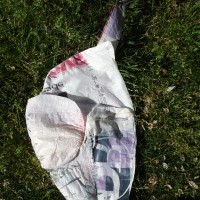
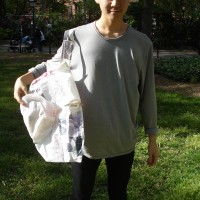
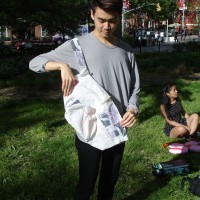
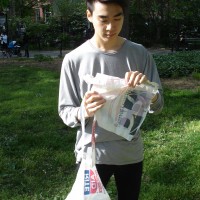
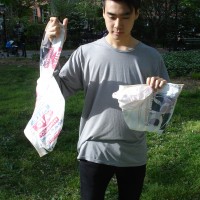
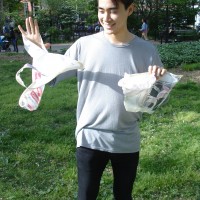
0 comments on “Deconstructed Metamorphosis: Final Bag” Add yours →